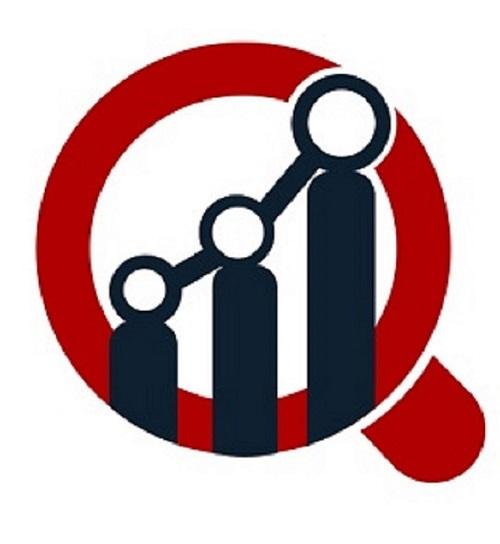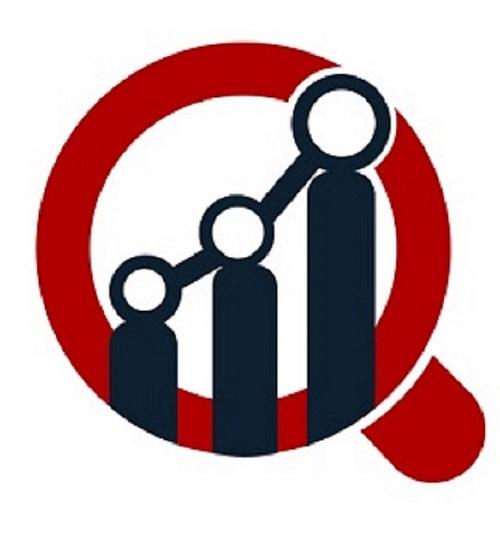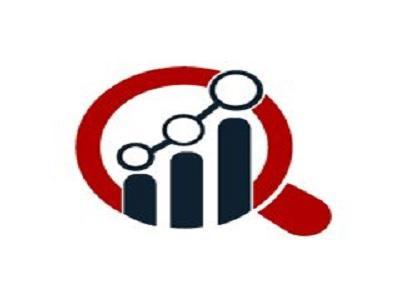Press release
PFAS Testing Market Set for Rapid Growth, Projected to Reach USD 28.2 Billion by 2035 at 10.83% CAGR
The PFAS Testing Market is gaining significant traction as governments, industries, and communities address growing concerns about water and soil contamination caused by per- and polyfluoroalkyl substances (PFAS). According to market estimates, the sector was valued at USD 9.09 billion in 2024 and is projected to reach USD 28.2 billion by 2035, expanding at a robust compound annual growth rate (CAGR) of 10.83% between 2025 and 2035.PFAS, often called "forever chemicals" due to their resistance to natural degradation, are linked to adverse health and environmental impacts. The need for reliable, accurate, and scalable testing methods has intensified in recent years as regulatory frameworks tighten and public awareness grows. This makes the PFAS testing industry a crucial enabler of environmental safety and regulatory compliance.
PFAS are synthetic chemicals widely used in industrial and consumer products, including firefighting foams, non-stick cookware, textiles, and electronics. Their chemical stability and resistance to heat, water, and oil make them useful but also problematic, as they persist in the environment and accumulate in living organisms.
The PFAS testing market addresses the urgent demand for methods to detect, measure, and monitor these substances in water, soil, food, and human blood samples. Laboratories, government agencies, and private companies are increasingly investing in testing technologies to comply with emerging regulations and to ensure public health protection.
The rapid growth of this market is driven by a convergence of factors-stringent government mandates, rising litigation risks, technological advancements in testing methods, and growing public demand for clean water and safer environments.
Get PDF Sample @ https://www.marketresearchfuture.com/sample_request/26885?utm_medium=sample-
Key Market Drivers
• Rising Regulatory Pressure
Governments across North America, Europe, and Asia-Pacific are tightening regulations to limit PFAS exposure. In the U.S., the Environmental Protection Agency (EPA) has proposed enforceable drinking water standards for PFAS, compelling municipalities and industries to adopt rigorous testing regimes. Similar initiatives in the EU and Asia are spurring global market expansion.
• Growing Awareness of Health Risks
PFAS exposure is associated with health conditions such as cancer, immune system disorders, and developmental issues. Increased public awareness has prompted demand for widespread PFAS monitoring and transparency, thereby boosting the testing market.
• Industrial Compliance Requirements
Industries such as manufacturing, aerospace, textiles, and food processing face stricter compliance norms regarding PFAS discharge. Testing has become essential for regulatory reporting, litigation defense, and environmental monitoring.
• Technological Advancements in Testing
Innovations such as liquid chromatography-mass spectrometry (LC-MS), high-resolution mass spectrometry (HRMS), and portable field testing devices are making PFAS detection faster, more accurate, and cost-effective.
• Litigation and Liability Concerns
As lawsuits over PFAS contamination increase, companies and municipalities are turning to testing providers for accurate data to support legal cases and remediation strategies.
Market Challenges
Despite strong growth prospects, the PFAS testing market faces several challenges:
• High Testing Costs - Advanced PFAS detection methods require expensive equipment and skilled personnel, limiting adoption in smaller labs.
• Complexity of PFAS Compounds - With thousands of PFAS variants, comprehensive testing remains technically challenging.
• Limited Standardization - Differences in testing methodologies across countries hinder consistency and comparability of results.
• Infrastructure Gaps in Developing Regions - Many emerging markets lack adequate laboratories and trained personnel for large-scale PFAS testing.
Buy Now @ https://www.marketresearchfuture.com/checkout?report_id=26885¤cy=one_user-USD
Market Trends
• Adoption of Portable Testing Solutions - Field-deployable kits are gaining popularity for real-time monitoring at contaminated sites.
• Integration with AI and Data Analytics - Advanced analytics are improving PFAS detection accuracy and enabling predictive contamination modeling.
• Collaborations Between Governments and Private Labs - Partnerships are expanding testing capacity and standardizing methodologies.
• Expansion of Laboratory Infrastructure - Increased investment in laboratory networks to meet growing testing demands.
• Rising Demand for Biological Testing - Focus on assessing human exposure levels is adding a new dimension to PFAS testing.
Segmentation Analysis
By Testing Method
• Liquid Chromatography-Mass Spectrometry (LC-MS)
• Gas Chromatography (GC)
• Other Analytical Methods
By Sample Type
• Water Testing
• Soil Testing
• Air Testing
• Biological Testing
By End User
• Government and Regulatory Bodies
• Industrial and Manufacturing Companies
• Environmental Testing Laboratories
• Research Institutions
Regional Insights
North America
North America dominates the global PFAS testing market, with the U.S. leading due to stringent EPA regulations, high public awareness, and significant investments in environmental testing infrastructure. Canada is also adopting stricter PFAS guidelines, adding to regional demand.
Europe
Europe is a significant market, with the EU rolling out comprehensive action plans under the European Green Deal to phase out PFAS and mandate monitoring. Countries like Germany, France, and the U.K. are at the forefront of PFAS testing adoption.
Asia-Pacific
Asia-Pacific is projected to witness the fastest growth during the forecast period. Industrial expansion in China, India, and Japan, combined with rising environmental regulations, is spurring demand for PFAS testing. Australia is also strengthening PFAS monitoring standards due to contamination concerns.
Latin America
Countries such as Brazil and Mexico are gradually expanding their testing capabilities. While regulatory frameworks are less stringent compared to North America and Europe, international trade pressures are pushing industries to adopt PFAS testing.
Middle East & Africa
This region is still in the early stages of PFAS monitoring, but rising awareness and international collaborations are creating opportunities for testing service providers.
Read More @ https://www.marketresearchfuture.com/reports/pfas-testing-market-26885
Key Companies in the PFAS Testing Market market include
• Microbac Laboratories
• Eurofins Scientific
• Alpha Analytical
• Mérieux NutriSciences
• Intertek Group
• Bureau Veritas
• Envirotest
• Columbia Analytical Services
Future Outlook
Looking ahead, the PFAS testing market is set for rapid expansion, reaching USD 28.2 billion by 2035. Key growth factors will include:
• Expansion of regulatory frameworks across developed and emerging markets.
• Increased demand from industrial compliance and litigation defense.
• Growth of portable and cost-effective testing technologies.
• Rising investments in laboratory infrastructure and skilled workforce development.
As the risks of PFAS contamination gain global recognition, the demand for reliable testing services will intensify. Market players that innovate in cost efficiency, standardization, and real-time monitoring will have a competitive advantage.
Browse More Reports:
Conformal Coatings Market: https://www.marketresearchfuture.com/reports/conformal-coatings-market-5786
Polyester Fiber Market: https://www.marketresearchfuture.com/reports/polyester-fiber-market-7295
Phosgene Market: https://www.marketresearchfuture.com/reports/phosgene-market-1184
Bio-based Chemicals Market: https://www.marketresearchfuture.com/reports/bio-based-chemicals-market-5706
Renewable Chemicals Market: https://www.marketresearchfuture.com/reports/renewable-chemicals-market-1047
Polycarbonate Market: https://www.marketresearchfuture.com/reports/polycarbonate-market-1080
Bromine Market: https://www.marketresearchfuture.com/reports/bromine-market-1500
Polymer Resin Market: https://www.marketresearchfuture.com/reports/polymer-resin-market-1702
Emulsifiers Market: https://www.marketresearchfuture.com/reports/emulsifiers-market-1717
Floor Coatings Market: https://www.marketresearchfuture.com/reports/floor-coatings-market-2218
Contact:
Market Research Future (Part of Wantstats Research and Media Private Limited)
99 Hudson Street, 5Th Floor
New York, NY 10013
United States of America
+1 628 258 0071 (US)
+44 2035 002 764 (UK)
Email: sales@marketresearchfuture.com
Website: https://www.marketresearchfuture.com
About Market Research Future:
At Market Research Future (MRFR), we enable our customers to unravel the complexity of various industries through our Cooked Research Report (CRR), Half-Cooked Research Reports (HCRR), & Consulting Services. MRFR team have supreme objective to provide the optimum quality market research and intelligence services to our clients.
This release was published on openPR.
Permanent link to this press release:
Copy
Please set a link in the press area of your homepage to this press release on openPR. openPR disclaims liability for any content contained in this release.
You can edit or delete your press release PFAS Testing Market Set for Rapid Growth, Projected to Reach USD 28.2 Billion by 2035 at 10.83% CAGR here
News-ID: 4204323 • Views: …
More Releases from Market Research Future

Denim Market Size By 2035 with 5.25 USD Billion in 2025 to 132.4 USD Billion, Du …
Denim Market Size Grow at a 75.25 USD Billion in 2025 to 132.4 USD Billion by 2035, CAGR of 5.81% By 2025 - 2035
Global Denim Market is entering a new phase of transformation as consumer demand, fashion cycles, and sustainable innovation continue to reshape the industry. Denim, once considered a classic wardrobe staple, has evolved into a versatile, fashion-driven category supported by innovations in fabric technology, eco-friendly production, and shifting…

Humanoid Robots Market Size to Reach USD 13.8 Billion by 2032, Growing at 50.2% …
The global Humanoid Robots Market is projected to reach USD 13.8 Billion by 2032, growing at a robust CAGR of 50.2% during the forecast period from 2024 to 2032.
Driven by advancements in artificial intelligence, machine learning, and machine vision, humanoid robots-designed with human-like characteristics-are witnessing widespread adoption across healthcare, education, space exploration, and service industries. These robots are enhancing operational efficiency, performing complex tasks, and improving customer engagement across multiple…

Vertical Farming Market Expansion: USD 9.023 Billion in 2025 Growing to USD 58.8 …
The Vertical Farming Market was estimated at USD 7.48 Billion in 2024 and is projected to grow from USD 9.023 Billion in 2025 to USD 58.83 Billion by 2035, exhibiting a robust CAGR of 20.62% during the forecast period from 2025 to 2035.
Driven by increasing demand for sustainable agriculture, urbanization, and technological advancements in controlled-environment farming, vertical farming solutions are seeing widespread adoption across commercial, industrial, and urban agriculture sectors.
Key…

Robotics Market Trends and Forecast: USD 74,120.70 Million in 2024 Expected to H …
The Robotics Market was valued at USD 74,120.70 Million in 2024 and is projected to reach USD 476,019.67 Million by 2035, growing at a robust CAGR of 18.4% during the forecast period from 2024 to 2035.
Driven by advancements in medical robots, growing industrial robotics adoption, and the development of AI technologies, robotics solutions are witnessing widespread adoption across healthcare, manufacturing, logistics, and service sectors. Despite challenges like high initial costs…
More Releases for PFAS
PFAS-Free Synthetic Turf Solutions | Eco-Friendly Artificial Grass and Non-PFAS …
This article delves into the key challenges and difficulties faced by the synthetic turf industry in achieving a "PFAS-free" transition, with a focus on innovative non-PFAS additive solutions designed to offer a sustainable path that balances high performance, safety, and environmental responsibility.
Challenges in Traditional Synthetic Turf Manufacturing | PFAS Risks Performance vs. Safety Dilemma
Traditional synthetic turf often relies on fluorinated polymers to achieve:
- Exceptional UV and weather durability
- Stain and…
Global PFAS-free Membranes Market Outlook Report 2025
Global Info Research's report is a detailed and comprehensive analysis for global PFAS-free Membranes market. Both quantitative and qualitative analyses are presented by manufacturers, by region & country, by Type and by Application. As the PFAS-free Membranes market is constantly changing, this report explores the competition, supply and demand trends, as well as key factors that contribute to its changing demands across many markets. Company profiles and product examples of…
PFAS-free Polymer Membranes Market Demand Analysis Report 2025
Global Info Research announces the release of the report "Global PFAS-free Polymer Membranes Market 2025 by Manufacturers, Regions, Type and Application, Forecast to 2031". This report provides a detailed overview of the PFAS-free Polymer Membranes market scenario, including a thorough analysis of the PFAS-free Polymer Membranes market size, sales quantity, average price, revenue, gross margin and market share.The PFAS-free Polymer Membranes report provides an in-depth analysis of the competitive landscape,…
PFAS Filtration Market: Advanced Solutions for Persistent Contaminants
𝐆𝐥𝐨𝐛𝐚𝐥 𝐌𝐚𝐫𝐤𝐞𝐭 𝐭𝐨 𝐑𝐞𝐚𝐜𝐡 𝐔𝐒𝐃 𝟑.𝟖𝟓 𝐁𝐢𝐥𝐥𝐢𝐨𝐧 𝐛𝐲 𝟐𝟎𝟑𝟑 𝐀𝐦𝐢𝐝𝐬𝐭 𝐑𝐢𝐬𝐢𝐧𝐠 𝐏𝐅𝐀𝐒 𝐂𝐨𝐧𝐜𝐞𝐫𝐧𝐬 𝐚𝐧𝐝 𝐑𝐞𝐠𝐮𝐥𝐚𝐭𝐨𝐫𝐲 𝐏𝐫𝐞𝐬𝐬𝐮𝐫𝐞𝐬
The PFAS filtration market is experiencing substantial expansion, driven by escalating concerns over per- and polyfluoroalkyl substances (PFAS) contamination in drinking water, industrial effluents, and consumer goods. Valued at USD 2,089.50 million in 2024, the market is projected to grow at a CAGR of 7.20%, reaching USD 3,855.56 million by 2033. This growth is fueled…
PFAS-free Polymer Processing Aids (PFAS-Free PPA Additives), a solution to the p …
In the plastic processing industry, die build-up is a common problem that can lead to surface defects in products, affecting product quality and production efficiency.
Die build-up refers to the accumulation of material at the outlet of the mold during plastic processing, forming deposits that are difficult to remove. This phenomenon usually occurs in injection molding, extrusion and other processes, especially in the processing of high viscosity and high melting point…
PFAS: What they are & how to avoid them
These "Forever Chemicals" have existed for what seems like forever, but they've just recently begun making headlines. Here's what you need to know about these troubling compounds.
In the world we live in today, the alphabet soup of acronyms for both good and bad substances can make your brain feel like mush. But there's one that you've probably seen popping up more and more. And it's one worth remembering.
PFAS, or "Forever…
